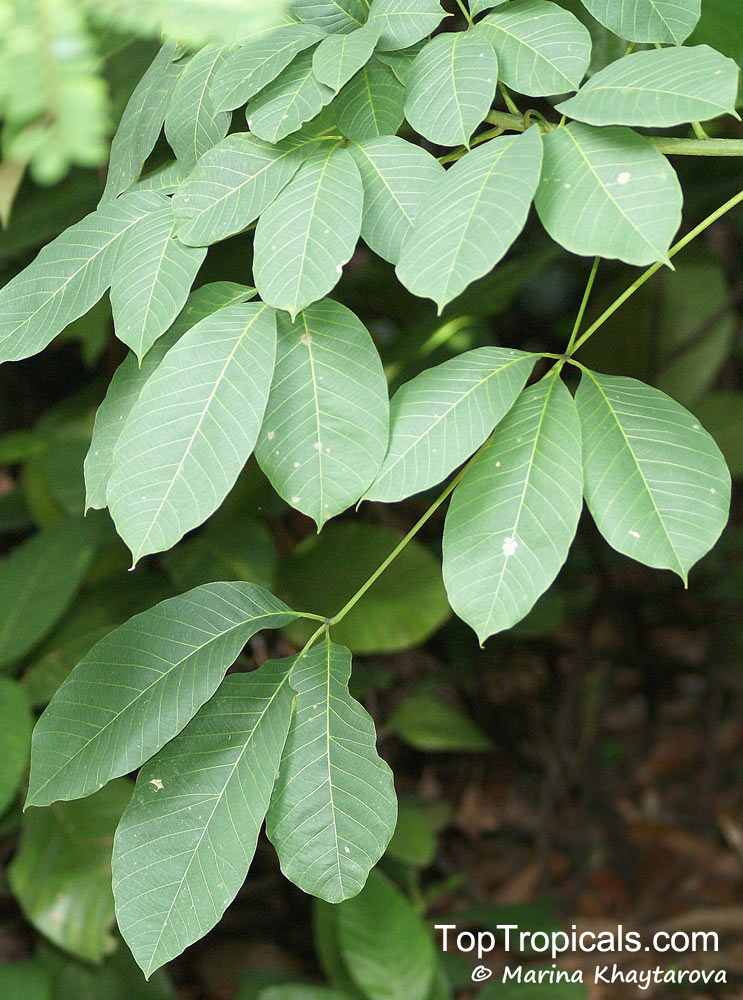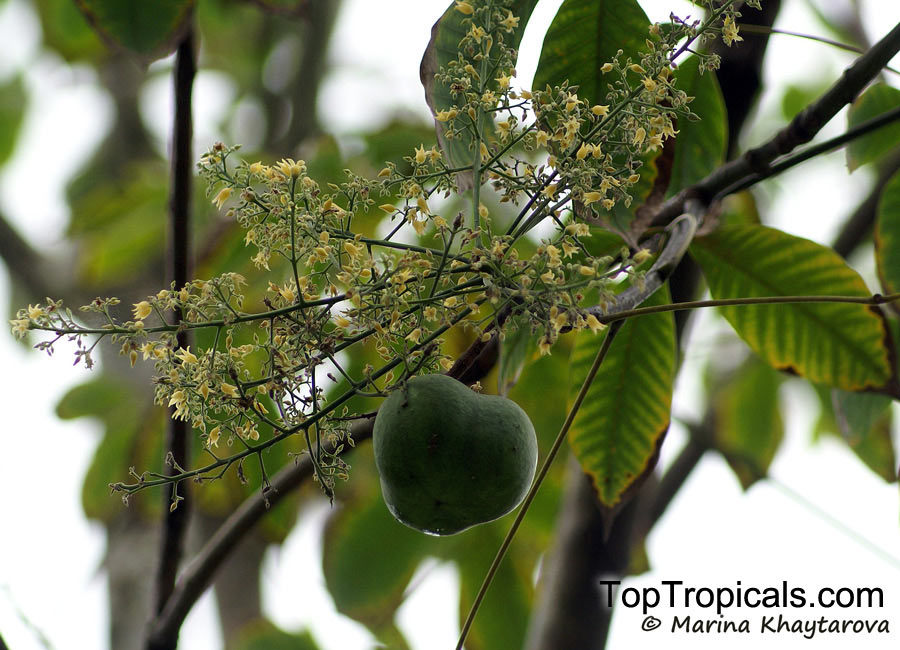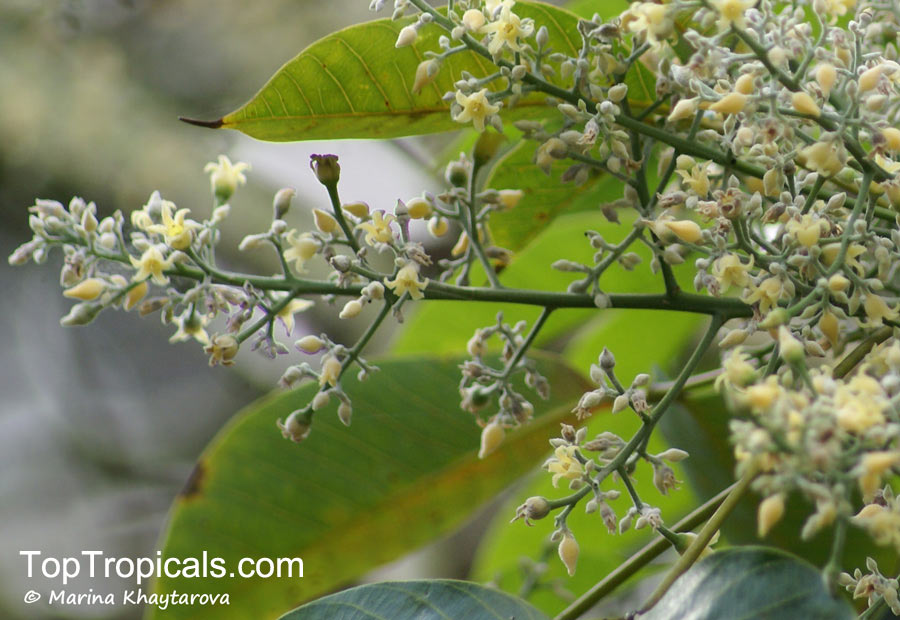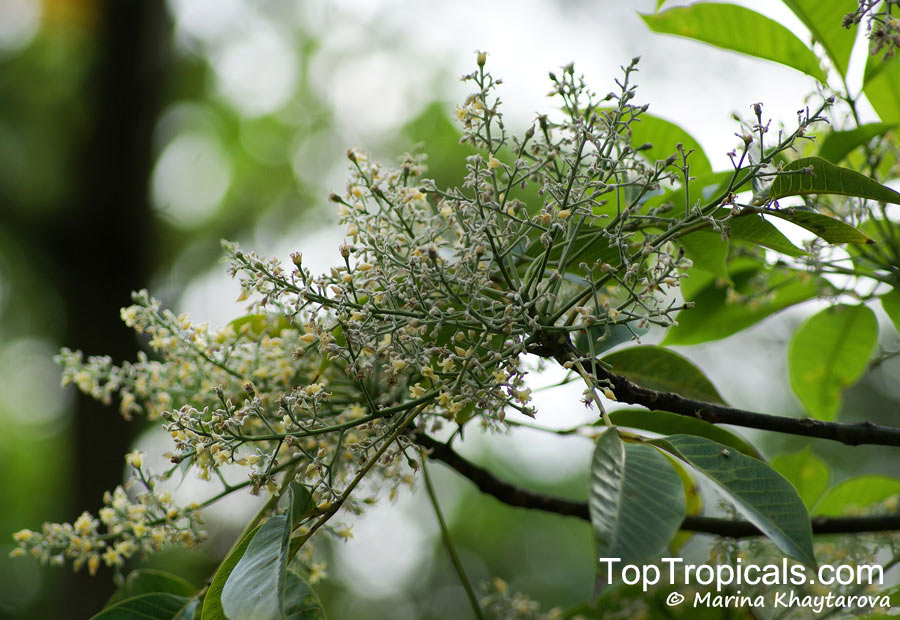Hevea brasiliensis (Rubber Tree)
Top Tropicals Plant Encyclopedia
Botanical name: Hevea brasiliensis
Common names: Rubber Tree, Sharinga Tree
Family: Euphorbiaceae
Origin: South America







Cultivated forms of Hevea brasiliensis, commonly known as the rubber tree, have become popular houseplants in the United States. This evergreen can reach in the wild heights between 100 - 150 feet when fully mature. Usually, the cultivated versions of the rubber tree are much shorter than the trees in their natural habitat reaching heights of 10-20 ft. In colder climates, they can be grown in pots and brought indoors during the winter months.
The rubber tree prefers a full sun or semi-shade location and prefers moist, humid air. It likes well-drained soil and should not be allowed to dry out completely. The rubber tree has large, leathery, ovate leaves that are deep green in color, with veins running from the middle vein to the margin. The bark of the rubber tree is light gray in color and the flowers are white or off-white in color.
The rubber tree is a deciduous plant, losing its leaves during the winter months. Since the rubber tree contains latex, it can be toxic when ingested. It is important to keep this in mind with children or pets in the home.
In USDA Zones 9-11, the rubber tree can be grown outdoors, preferably in a location that is well protected from strong winds, as it is prone to leaf drop in windy conditions. Contrary to popular belief, the rubber tree is not a fast-growing plant. In fact, it grows quite slowly and will not reach its full height until it is several years old. Once established, it requires very little care, as it is highly adaptable to a variety of growing conditions.
To ensure the best possible care, water the rubber tree when the soil feels dry, but do not allow the soil to become overly wet. Feed the plant with a balanced liquid fertilizer every other week during the growing season. During the winter, the rubber tree should be kept in a semi-dormant state and fertilizing can be reduced to once a month. Pruning the rubber tree regularly will help promote its growth and will also keep its size and shape under control.



